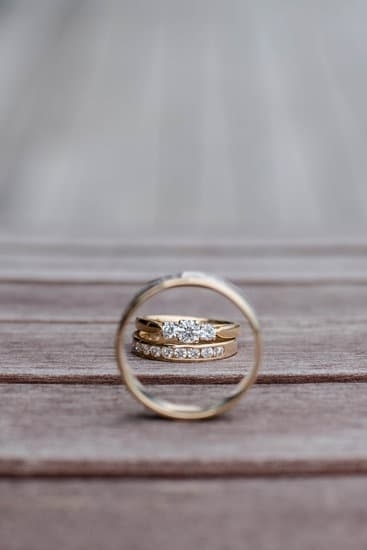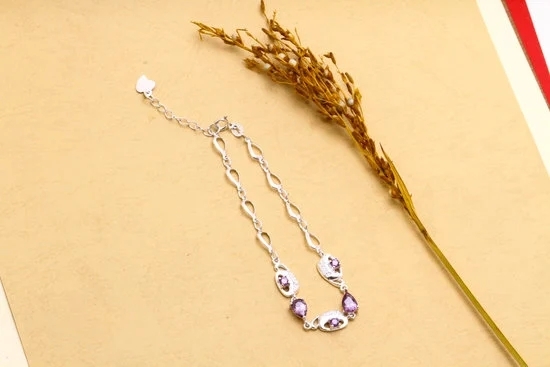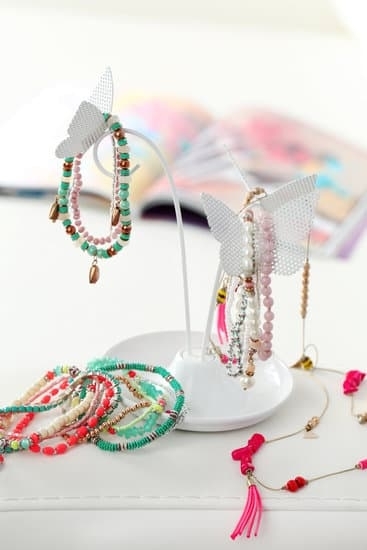Cameo jewelry was a popular accessory during the Victorian era, between 1837-1901. Offered in a variety of intricate styles and designs, these elegant pieces were lovingly crafted from beautiful engraved semi-precious stones such as carnelian, sardonyx and agate. Originated in Italy, this form of jewelry was often commissioned by wealthy aristocrats to use as gifts for their loved ones or even for themselves. In addition to being luxurious decorations, cameos also symbolized good luck and protection against harm.
The Popularity Boom of Cameo Jewelry During the Victorian Era
During the Victorian era, cameo jewelry experienced a peak in popularity. Elegant engravings delighted Victorians with an opportunity to flaunt their sophistication and status through wearing such luxurious accessories.
Queen Victoria scandalised her court by enjoying not just one but several different colored outfits throughout the course of a single day. Consequently this prompted others to similarly compete with one another when it came to flaunting their wealth, specifically through opting for elaborate designs made out of the finest materials available at the time, including perhaps none more so than cameo jewelry.
The Significance Of Cameos During The Victorian Era
Given its growing popularity amongst the victorian elite, it’s clear that cameos had and still have a special place in human culture – as decorative luxuries that can express our deepest thoughts and feelings through artistry and craftsmanship unparalleled by any other period of history. Rare luxury materials like gold and silver where used for making these masterpieces which then further enhanced their revolutionary aesthetics.
Furthermore some Victorians famously sought after even rarer materials such as ostrich eggs or tortoise shells when having commissions taken out for them to preserve forever glorious moments from the past inside a prayer bead – like objects. This sacred practice indeed thus created timeless works from virtually any material available regardless of size or form.
Defining the Victorian Era
The Victorian Era, which spanned from 1837-1901, was an era of much change for the British people. Following Queen Victoria’s ascension to the throne, her entire reign served to create a newfound sense of civic responsibility for the nation’s people. A widespread shift in societal values occurred as morality and etiquette were emphasized by all members of society. This type of moral influence can be seen in the jewelry designs fashionable during this time.
Cameo jewelry was especially popular during this period as it served to represent a sense of elegance highly valued by those in the upper-class Victorian social structure. Traditionally made out of precious minerals such as agate or coral, cameo necklaces were typically adorned with either mythical portraits or scenes that honored religious devotees and upheld a moral code at the same time.
As symbols of purity, this type of jewelry went hand-in-hand with the notion that one had “good breeding” and inner beauty that transcended simple physical looks; an idea promoted heavily by Victorians seeking to establish a greater standard across their kingdom and out into Europe.
In addition to its moral connotation, cameo jewelry was particularly popular among Victorians due to its intricate engraved details and ornamental carvings meant to honor figures from mythology or religion – along with stylized words like “love” and “eternity”. People appreciated these aesthetic elements within their jewelry design for centuries due to its ability to withstand changing trends throughout time; making it very much sought after even afterwards among succeeding generations.
Therefore, it was no wonder why cameo pieces played such an integral role in defining fashion statements from 19th century Britain – providing fashionable luxury without compromising on standards set within their culture.
Fashion Through Time
Cameo jewelry was a popular fashion during the Victorian era. This romantic style of jewelry was loved by many for its exquisite designs and close association with the romance of ancient Rome. For the people of that time, cameo jewelry represented a cherished connection to the past, especially to Roman royalty and goddesses like Venus de Milo or Psyche for whom these designs often depict.
During this period, particularly during Queen Victoria’s long occupancy from 1837-1901 women preferred classical looks over modern trends in their clothing and accessories. Cameo brooches were especially popular among both lower and upper classwomen, as they complemented high-necked gowns without detracting from them. The cameo images were usually carved out of pearls or gemstones, providing an elegant touch to their outfits. Men also wore fancy cameos on their lapels as part of their formal attire.
Cameo styles varied throughout this era, often emulating ancient Greek works such as vases with detailed scenes portrayed upon them in low relief carvings. By the late 19th century more complex styles started appearing such as three-dimensional representations and full faces portraying deities and mythical creatures.
Both hardstone (made from chalcedony) and shell cameos became grander in size, with some being deserving of cabinets to display them rather than pins applied to clothing. Markers are able to determine if a cameo is original Victorian era or created at a later time by looking for details within the stone or shell, such as fine lines present in older pieces but not modern reimagining’s.
In conclusion, cameo pieces remain some of the most beloved memorabilia from Victorian times due to their endless beauty and representation of gems from long ago times memorialized within them still today.
The Fairest of Them All
crafted beautiful jade cameo jewelry. From rings to necklaces and everything in between, each piece was made with delicate intricacy and stunning detail. During this era, cameos were traditionally carved from shell or hard stones such as jasper and agate.
They were often crafted by artisans using detailed engravings of the human figure or Greek gods set against a contrasting background. This classic style of cameo jewelry was popular among the wealthier classes during the Victorian era and it still stands today as an icon of distinct elegance.
The popularity of these pieces spread quickly throughout Europe due to their exquisite craftsmanship, though importing them could become very expensive. Because of this, family heirlooms such as gemstones and other raw materials began to be incorporated into the designs.
Precious gems like diamonds, rubies, sapphires, amethysts and emeralds were set against intricate gold filigree which created a luxurious look that was highly desired by collectors during the era. These eclectic combination cameos had classical figures embedded within larger designs featuring rich flowery motifs or elaborate verdant landscapes for example.
It wasn’t just jewels that could bring life to these incredible pieces – semi-precious stones like turquoise peach moonstone were popularized for these items too. When combined with brass or wooden bases they gave comeos a unique texture not seen in the more traditional works while still remaining true to the intricate quality found in classic examples.
Without modern tools it was near impossible to mass produce or replicate these stunning works of art so any cameo created during this period is highly prized as individual masterpieces reflecting a contemporary taste for luxury goods at the time.
Pieces of Victorian cameo jewelry are incredibly rare today due to their limited production capabilities back then. Despite modern advancements allowing craftsmen more freedom when creating cameos, many collectors still search high and low for pieces authentically the Victorian Era – making them some of the most sought-after items on antique markets around the world.
Captured for Eternity
The Victorian era is marked by a period of unprecedented prosperity, cultural growth, advancements in art and jewelry making, and the use of new technologies. One of the most popular types of jewelry during this time was cameo jewelry.
This type of jewelry had various carvings with portraits or decorative motifs such as flowers, animals or geometric shapes that were mounted on precious metals. During this golden age for English art and culture, cameo jewelry was crafted from both traditional materials such as shell and gemstones, but also from newer materials created through advancing process in engineering and manufacturing.
The popularity of carved gems is thought to have first appeared during the Renaissance when a revival of classical antiquity led to new decorative styles that used classical portraiture along with intricate motifs inspired by religious iconography. However, it wasn’t until Victorian England that fashion designers began to create more elaborate pieces inscribed with symbols that became a powerful symbol in their own right.
The ‘romantic’ design movement gave rise to crescents and stars adorning necklaces as designs which celebrated love while other motifs celebrated patriotism and power through Imperialisms emblems.
Cameo jewellery gained immense popularity during the reign of Queen Victoria not only due its physical beauty but for the symbolic messages carved into these works of art about the values taught within English classrooms at the time. By the mid-19th century, an array of Roman gods adorned jewel pendants along with biblical passages conveying morality lessons from scriptures often used at home or school settings.
This proved an opportunity to marry modernity with timeless stories providing a vehicle for conversations between family members and friends alike. In addition to moral teachings; this type of jewellery also presented society views by addressing diverse topics such as natural world views-such as creationism-and ethical guidelines which highlighed consensus between conventional wisdom and beliefs among different social classes.
History in Every Piece
Victorian cameo jewelry is highly sought after and treasured by many, with each piece possessing a unique and historical charm. The Victorian Era from 1837 to 1901, was full of Queen Victoria’s influence on the fashion styles, interior designs, and activities enjoyed by all.
Even jewelry had its own signature look, with cameo jewelry being one of the most popular pieces created during this period. What may look like a simple design for some can in fact contain various amounts of symbolism that can tell us an entire story of who owned it and what was going on in the world at that time.
Most early (1800-1830) cameos were carved into the shape of a portrait and often featured classical figures such as Napoleon or mythological Gods and Goddesses like Cupid or Aphrodite. They were worn to indicate political preferences or loyalties to society as a form of expression as well as admiration for recognizable icons such as notable scientists, scholars, actors/actresses, poets & authors etc.
Starting around 1830’s some pieces began featuring motifs taken from actual monuments like well-known bridges or even wildflowers inspired from romantic poetry. This ultimately became the trademark style for Victorian Cameo Jewelry depicting an array of sculptures, soldiers’ helmets, leaves & other found objects framed within a wreath or circle.
The use of color became increasingly popular among higher classes looking to add more distinction to their adornment in this way expressing emotion such as sentimentality for home life or status within society via beautiful colors such as purples & greens. By 1880 Queen Victoria adopted her own specific cameo style featuring intricate floral arrangements containing tiny diamonds & colored gems – these seemed to represent love that she had in her heart for Albert – which was quite touching at the time .
Nothing more iconically expresses romance than the traditional picturesque elements outfitted together with precious gemstones creating unmatched romantic elegance right out of literature books.
A circular baroque frame accents the overall aesthetic bringing attention towards one central design element creating striking balance throughout whole piece making any outfit stand out. Generally speaking each lady’s individual taste would determine the style & composition dictated by either herself or her family members upon gifting her special gift.
Make a Statement
The Victorian era has always been known for lavish accoutrements and delicate touches in its fashion and design. One of the most beloved looks of this period is the iconic cameo jewelry style.
Cameos are timeless pieces of art that allow you to express your individual style and make a statement with eye-catching designs. Whether it’s a traditional portrait silhouette profile or something more funky, there is no limit to how creative you can get with these special treasures.
Cameo jewelry first appeared around 1830 as every fashionable lady owned at least one piece from the collection. Crafted from glass or semi-precious gemstones, cameos allowed for artisans to intricately carve beautiful images such as goddesses or flowery scenes.
Carved out of elephant ivory, shell, coral, or lava rock, each piece creates an opportunity for elegant expression through meaningful symbolism. These carving techniques had been used since time immemorial but during the Victorian age, it became especially popular due to Queen Victoria’s love for cameos and their exquisite designs.
Throughout the decades, cameo design choices began evolving to meet trending styles and incorporate new materials like metals and enamelwork. Thanks to modern innovations like laser cutting technology cameos can now be cut into nearly any shape while still retaining intricate detail and centuries-old craftsmanship appeal.
So then whether it’s a gorgeous framed locket or bold pendant featuring roses made of silver accompanying large carved face profiles; these pieces promise to become conversation starters as well as cherished additions to your own personal collection.
No matter what your personal preference may be – angular lines, multi-tiered layers, abstract expressions – there truly is no limit on how far you can go when designing custom cameo jewelry creations today. From classic white silhouettes on blackened backgrounds imagined in modern materials like titanium; possibilities are left only up for interpretation by each wearer or admirer. So why not make an unforgettable statement showcasing unique works of art crafted from the very same tradition celebrated since Victorian times.
The Legacy Lives On
Victorian era cameo jewelry is a timeless classic. With its intricate designs and undeniable aesthetic, one can’t help but to be drawn to the beauty and gracefulness of this type of jewelry. For centuries, cameo jewelry has been a favorite among royalty, aristocrats, prominent politicians and icons throughout history.
Today, modern styles of cameo jewelry celebrates the nostalgic of the past while maintaining a stylish look for today’s fashionistas. Designs such as bold and edgy chokers, or statement earrings featuring sideways profiles are just some examples of how this antique style can take on a fresh flare. Even traditional pieces such as pendants and necklaces made with layers upon layers of intricate carvings remain an absolute classic.
Using new materials like semi precious stones set in gold adds an extra element which allows these settings to stand out from more traditional designs. These settings often feature more creative forms like animal faces or abstract textures from nature; making them great additions to special designs for events such as weddings or special occasions like birthday gifts.
Overall, cameo jewelry have surged in popularity due to their versatile use. Wearers can opt for either subtle statements or daring show-stopper pieces that radiate sophistication and refinement – perfect for any outfit and any occasion.

Welcome to my jewelry blog! My name is Sarah and I am the owner of this blog.
I love making jewelry and sharing my creations with others.
So whether you’re someone who loves wearing jewelry yourself or simply enjoys learning about it, be sure to check out my blog for insightful posts on everything related to this exciting topic!





